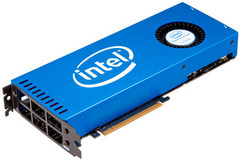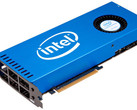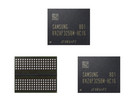Many consumers know Intel for its CPUs, and maybe its integrated graphics as well. But for years Intel has been trying to break into the high end GPU market, ever since the late 2000s. Finally, Intel is actually teasing a product like Nvidia or AMD would. However, it won't actually be launching this year; the trailer states 2020 is the year we need to wait for.
Last year, Raja Koduri, former head of AMD's RTG (Radeon Technologies Group), left RTG suddenly to join Intel to head Intel's new Core and Visual Computing Group. It is likely that whatever product Intel is teasing will be a result of Koduri's work in this new project; architectures take years to develop, and 3 years for what could be a new GPU architecture seems reasonable. While Intel already has PCIe "coprocessors," which are technically GPUs based on the Larrabee project, this could be a more traditional GPU of the sort that AMD and Nvidia create, and it would be the third graphics project Intel has pursued, after its integrated graphics (which by far hold a market majority) and Larrabee derivatives.
So, what can we expect from Intel? Well, nothing yet. This may be its first attempt at a ground's up GPU architecture since Larrabee, and while Koduri has incredible credentials from his time at RTG and Apple, it has been over a decade since there has been a serious competitor in this segment of the graphics market. It could be an actual gaming GPU; it could be a better Xeon Phi; it could be for professionals. It's simply impossible to know. Hopefully Intel's Siggraph presentation will shed some light on the state of Intel's discrete graphics efforts.


 Deutsch
Deutsch English
English Español
Español Français
Français Italiano
Italiano Nederlands
Nederlands Polski
Polski Português
Português Русский
Русский Türkçe
Türkçe Svenska
Svenska Chinese
Chinese Magyar
Magyar







